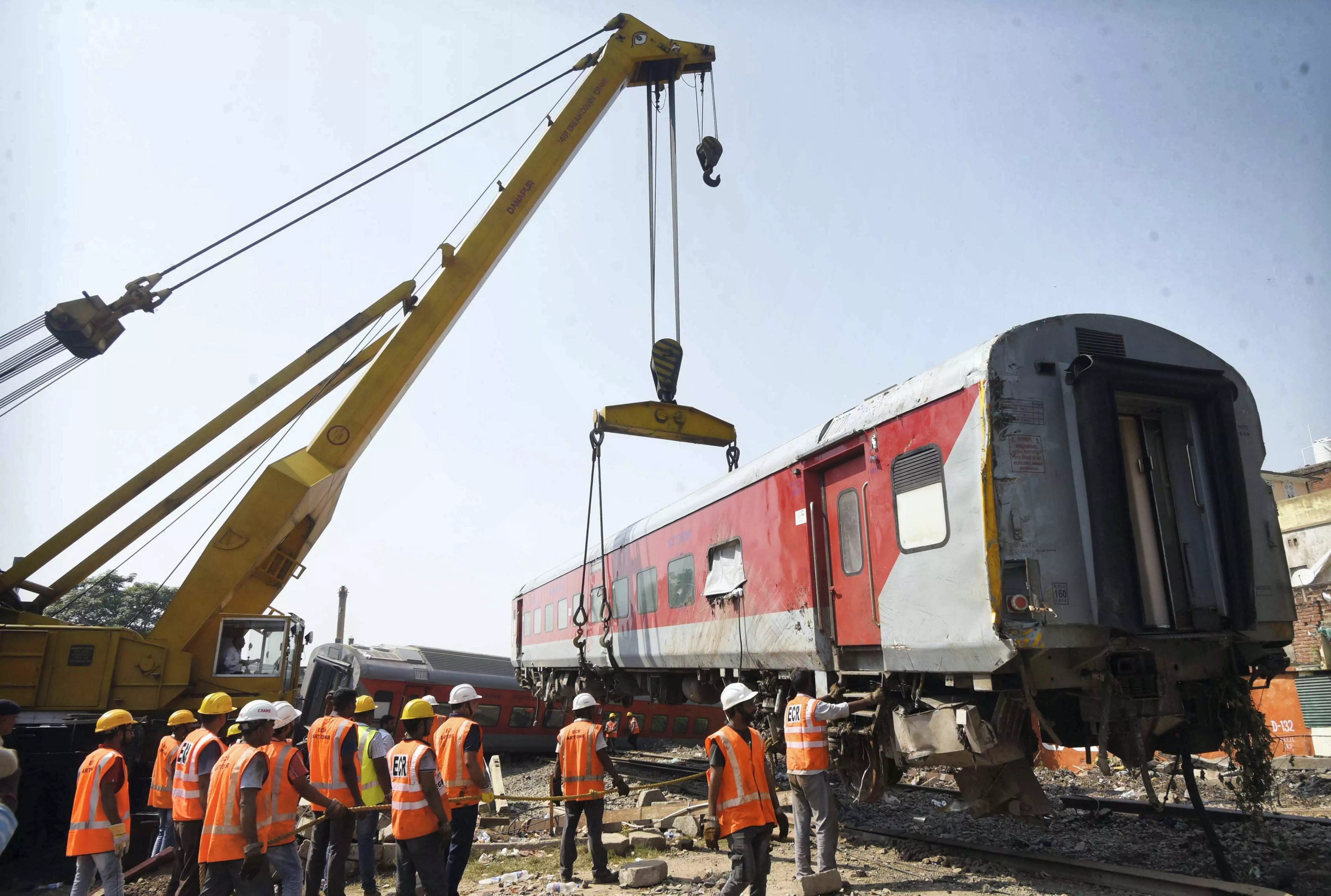Unsafe tracks?

The train derailment near Raghunathpur station in Bihar's Buxar district serves as a stark reminder of a dark chapter in India's recent rail history — the Bahanaga Bazar train collision that took 288 lives and injured over 1,000 people. The Bahanaga Bazar disaster was the deadliest train accident India witnessed in the 21st century. While the Raghunathpur train accident has resulted in comparatively limited casualties, one must not forget that even a single life lost due to negligence is one too many. Train derailments and collisions have the potential to unleash widespread devastation, and by the time the damage is done, all that remains is sorrow and regret. The real essence of preventing these tragedies lies in taking robust preventive measures. In the wake of such incidents, we often witness the routine promises from top railway officials, from the Union Railway Minister to the Railway Public Relations Officers, to "find the root cause of the accident." However, these statements often reek of a fault-finding and punitive approach. This approach tends to overlook the deeper structural issues within the railway system that have been claiming lives with dismaying regularity. The unfortunate reality is that such assurances tend to hold little value as time passes, and the issues gradually cool off, fading from public memory, only to be reignited when another train accident occurs. It's undeniably true that with the advent of advanced technologies and a few meaningful initiatives by the railways, the frequency of train accidents has reduced over the past two decades. Yet, the failure of the Indian Railways to prevent accidents to a minimal level remains nothing short of appalling. Even in the past decade and a half, the nation has witnessed several major train accidents. As India aspires to replicate the success of fast-moving trains from countries like Japan, it should also earnestly learn from the impeccable safety records of these nations. Japan, renowned for its high-speed trains, such as the Shinkansen or Bullet trains, has maintained a flawless safety record, with zero passenger fatalities since the Shinkansen began operation in 1964. The UK, too, boasts of impressive safety standards. The Indian Railways must conduct a comprehensive case study of these railway systems and tailor replicable measures to its unique requirements. It is imperative to recognise that launching ambitious high-speed trains is commendable, but it should not take precedence over addressing the fundamental issues plaguing large sections of the Indian railway network. The haphazard state of railway tracks near Raghunathpur station mirrors what exists in various parts of the country. Thankfully, in this modern age, a wide array of technology is at our disposal to avert train crises. This technological arsenal should be harnessed to modernise the entire structure of the Indian Railways, which has seen minimal change since the colonial era. This transformation must be extensive, reaching far beyond isolated segments. The modernity we seek in the Indian railway system will not come solely from the introduction of bullet trains! Installing modern signalling systems like Automatic Train Protection (ATP) and Train Collision Avoidance System (TCAS) can significantly enhance train control and safety. The implementation of Anti-Collision Devices on trains, which can automatically apply brakes when two trains are on the same track, can prove to be effective in preventing collisions. The deployment of technology such as GPS-based tracking and monitoring systems for real-time information on train movements, along with the use of drones for the inspection of rail infrastructure, can bolster safety measures. These technological interventions must be implemented across the length and breadth of the country. However, beyond technology, an attitudinal shift is crucial for bringing about a positive change. It involves a commitment to safety as a top priority and the will to adapt and modernise the system proactively. It necessitates the railways taking a more holistic approach to safety and recognising that every life is invaluable, regardless of how few or many are lost in a single incident. While the Raghunathpur train accident has grabbed headlines for the moment, let us not allow the issue to fade into obscurity, only to be reignited by another tragedy. The time has come for the Indian Railways to wholeheartedly embrace the possibilities that advanced technology offers, to modernise its entire infrastructure, and, most importantly, to foster a culture where safety is paramount. Let the legacy we leave for future generations be one of a safer, more efficient, and more compassionate railway system.



